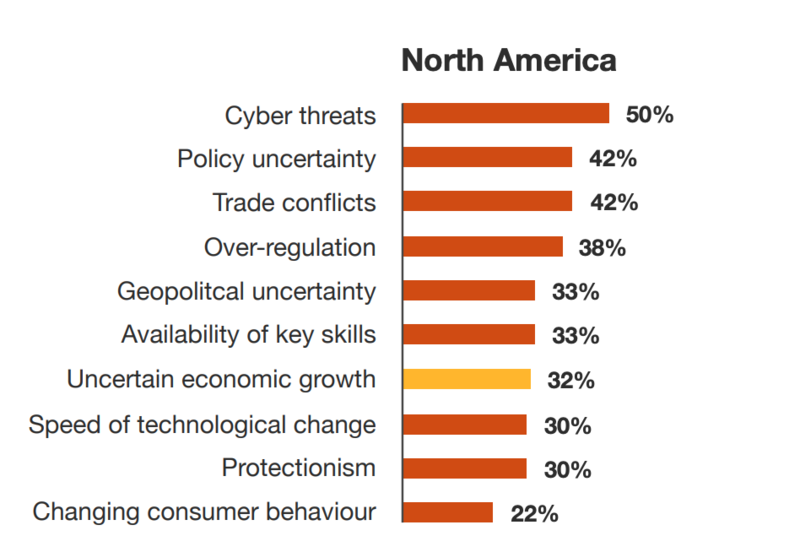If protecting businesses against hackers was simple, the global cybersecurity market wouldn’t be valued at 156.5 billion.
That’s why companies are securing their data with a comprehensive approach: the cybersecurity architecture. Creating this protective umbrella requires IT security expertise and helps to deflect the stream of cyberattacks and ensure continuous operation.
We believe that knowledge is power, so we created this quick guide to cybersecurity architecture.
Read on to know more and get tips to protect your business.
What is Cybersecurity Architecture?
Cybersecurity architecture is the foundation of a company’s defense against cyberattacks that protects the IT infrastructure. It consists of cybersecurity software and policies and is adaptable to be effective against new threats.
Cybersecurity architecture places security controls and measures into the overall IT systems of a company. These controls and measures are designed to ensure continuous availability, confidentiality, and integrity of data and information.
Elements of cybersecurity architecture:
-
Policies and guidelines describing the company’s response to cyberattacks, security configurations, risk management, secure accounts’ management, and disaster recovery
-
Security elements such as software (anti-virus, anti-malware apps) and devices like encryption devices, firewalls, and Intrusion Detection/Protection Systems
-
Digital identity management to ensure the security and integrity of sensitive data of the company’s users
-
Access control measures to prevent unauthorized access from third parties and outsiders
-
Employee training to improve the knowledge of cybersecurity risks and techniques in the workforce.
How to Build an Architecture to Protect Your Company Against Cyber Threats
These are the most important steps to create an effective cybersecurity architecture with excellent protection against cyberattacks.
1. Identify the Company’s CyberSecurity Needs
Many companies aim to resolve most cybersecurity issues by trying to fix everything at once with a single framework. In reality, it’s like having a mini car for off-road driving needs.
Where this approach falls short is the research of the ability of that cybersecurity framework to meet the unique needs of a business. I.e. protect against attacks that a particular company might encounter.
The implementation of the security measures is also often rushed, which might result in the security team missing some important details.
Rather than trying to fix most cybersecurity issues at once, researching the unique needs of the company could be a useful strategy. This means doing a cybersecurity audit to find specific risks and vulnerabilities and help decide how to implement the cybersecurity architecture.
2. Get Support from the Management
A cybersecurity team is a primary responder to cyberattacks, but the responsibility to protect the digital infrastructure also lies on the shoulders of CEOs.
The top management is key to ensure that the entire organization is compliant with the requirements of the cybersecurity infrastructure. In best-performing companies, CEOs realize the importance of cybersecurity and are actively involved in the planning and implementation of related measures.
In fact, a recent global CEO survey from PwC found that cybersecurity threats were the top concern of CEOs in North America.

Source: PwC, 23rd Annual Global CEO Survey
Communicate the findings of the cybersecurity audit to your CEO to ensure that the cybersecurity architecture gets enough support from the top management. It’s very important that he or she prioritizes the implementation and organization-wide compliance with cybersecurity policies.
3. Build the Right Cybersecurity Team
The best protection against cyberattacks?
A team of talented cybersecurity professionals who know what they’re doing. As with any other business project, talent resources define the company’s success.
Tips to recruit cybersecurity professionals:
-
Check if a person has experience with designing and implementing a cybersecurity architecture in a company of a similar size. Avoid hiring someone with little or no experience - cybersecurity architecture is a complex project
-
Appoint a security architect. The job of this person would be to ensure that your company’s security stays one step ahead of hackers, attacks, malware, and other cyber issues
-
Consider IT outsourcing. This strategy involves hiring remote cybersecurity professionals and gives you access to a bigger pool of talent + reduces costs
-
Don’t rely on salaries alone. IT professionals are often willing to accept lower-paying jobs in exchange for an opportunity to work on a unique, challenging project.
How many people should be on the team?
The size depends on your business’s size, of course, but having at least a few professionals managing your cybersecurity needs is recommended.
4. Focus on the Top Cybersecurity Challenges of 2021
Cyber threats are constantly evolving, and companies need to keep watch on them. Your cybersecurity strategy should focus on the most prominent threats.
In 2021, the list of top cybersecurity challenges includes:
-
Cloud vulnerabilities. Cloud security breaches are a major problem - almost 80% of U.S-based companies have experienced at least one breach within the last two years. The most effective solutions to battle such breaches are cloud monitoring tools, proper permission, and security configurations.
-
Deepfake. It’s a technology that allows creating fake videos that look and sound real. Hackers use it to create fake business emails with malware that might allow breaching into data systems
-
Social engineering attacks. Phishing attacks like emails have been out there for years, trying to trick people into providing credit card information and login details
-
Ransomware. This type of malware infects computers and denies access until a fee is paid. Protection against ransomware includes regular back up of resources and data, constant monitoring of everyday operations, and organization training to recognize scams.
Many of these cybersecurity challenges are related to risks caused by employees. In fact, employee negligence and human error are top cybersecurity issues. To teach your workforce skills to protect your company against hackers, consider investing in employee training.
Cybersecurity Architecture: Summary
An effective cybersecurity architecture allows online businesses to continue their operations and collect revenues. The expertise of creating protection mechanisms and strategies plays a key role, as developing a custom solution requires a lot of knowledge.
The most important steps to build a cybersecurity architecture:
-
Find a company’s unique cybersecurity needs
-
Get buy-in and support from the top management
-
Build the right team to address the unique cybersecurity needs
-
Protect against the top threats.

